Archaeology - Neolithic
Sites
United Kingdom (Stonehenge | Avebury)
Malta and Gozo (Ggantija
| Hagar Qim | Mnajdra)
Crete (Agios Nikolaos | Iraklion | Knossos | Malia)
(For Roman sites click here)
Here are some photos from our various trips to archaeological sites. This page is in no way intended to be a comprehensive archaeological resource, but hopefully the photos are interesting.
Click on a thumbnail image to see the full picture.
![]()
![]()
![]()
![]()
![]()
![]()
![]()
![]()
![]()
![]()
![]()
![]()
![]()
![]()
![]()
Stonehenge (England).
English Heritage Stonehenge site
This famous henge on Salisbury plain dates from around 2500 BC.
Distant view from South
| View from North-west |
View from South
|
![]()
![]()
![]()
![]()
![]()
![]()
![]()
![]()
![]()
![]()
![]()
![]()
![]()
![]()
![]()
Avebury Stone Circle (England).
National Trust Avebury site
This large prehistoric monument encloses part of the village of Avebury within its circumference. It is composed of an outer stone circle and earthwork, with two inner circles. Its earliest phase dates to around 2500 BC. (It was used as the location for the 1970s children's television series Children of the Stones.)
Outer Circle bissected by road
| Stone |
Part of inner circle |
Shadows |
|
Inner circle
| Large Stones |
Outer ditch |
Outer Circle |
|
![]()
![]()
![]()
![]()
![]()
![]()
![]()
![]()
![]()
![]()
![]()
![]()
![]()
![]()
![]()
All the Malta and Gozo photos are scans of 35 mm prints. Simple sketch maps are included to give some context, since the layout of some of the temples is quite complicated.
Ggantija
Neolithic Temples (Gozo).
Megalithic
Temples of Malta site
Dating
back to 3600 BC, Ggantija (pronounced "Ji-gun-TI-a") is an impressive
complex of two temples on
the island of Gozo, Malta's smaller neighbour. Each
temple has five apses (two outer and two inner, with one at the rear).
The
photos were taken in 2001.
South
Ggantija Temple & Boundary Wall
The complex was surrounded by a huge boundary wall which is still
partially standing. The south temple has the most interesting features,
including "perforated" holes that were used to close the temple
entrance, and libation holes for liquid offerings.
Boundary Wall |
Southern Exterior Wall |
Scaffold to left of Entrance |
Entrance |
"Perforations" used to seal entrance |
Close up of "Perforations" |
Left Outer Apse |
Right Outer Apse |
Libation hole |
Left Inner Apse |
Right Inner Apse |
Rear Apse |
North
Ggantija Temple
This temple has a nice altar in the rear apse. The sheer height of
the stone walls is shown well by the collage.
Entrance |
Entrance |
Left Outer Apse |
Right Outer Apse |
Edge of Door to Inner Apses |
Door to Inner Apses |
Left Inner Apse |
Rear Apse (top) |
Rear Apse (altar) |
Rear Apse (collage) |
![]()
![]()
![]()
![]()
![]()
![]()
![]()
![]()
![]()
![]()
![]()
![]()
![]()
![]()
![]()
Hagar
Qim Neolithic Temple (Malta).
Megalithic
Temples of Malta site
The Hagar Qim temple (pronounced "hajar-EEM") dates back to
at least 3000 BC. It is linked by a straight modern path to its sister
temple, Mnajdra
(see below) which is nearer the cliffs. The
photos were taken in 2001.
The north side of the temple is particularly impressive due to the size of the large horizontal stone. Similarly the South West Corner features four very tall stones around the boundary of the temple. Both Hagar Qim and Mnajdra feature several doorways hewn from the centre of single slabs of stone, as well as smaller openings to small "oracular" chambers.
South Outer Wall |
Main Entrance |
Entrance Chamber - Altar and Carving |
Entrance Chamber - Door to side Apse |
Central Chamber - Oracular Window |
Central Chamber - Looking South West |
|
 |
||||||
South West Outer Wall |
Hagar Qim - viewed from east (panorama) |
West Outer Wall |
Road to Mnajdra Temple |
Secondary Temple near Hagar Qim |
||
![]()
![]()
![]()
![]()
![]()
![]()
![]()
![]()
![]()
![]()
![]()
![]()
![]()
![]()
![]()
Mnajdra
Neolithic Temple (Malta).
Megalithic
Temples of Malta site
Like its sister temple, Mnajdra (pronounced "Im-NY-dra") dates
back to at least 3000 BC. It is reached by a straight modern path from
Hagar Qim, above.
The
photos were taken in 2001, before the senseless vandalism
that toppled and broke many of the stones (restoration has now taken place.)
Like Ggantija on Gozo, the temple has two distinct sections within a single complex.
Mnajdra
Upper Temple & Subsidiary Building
A lot of the Upper Temple has a highly 'finished' feel with large,
open areas bounded by smooth cut stones. There is an interesting carving
of a megalithic temple in the passageway between the outer and inner halves
of the temple. The horizontal stone over the recess at the rear has been
shored up with modern pillars.
%20-%20left%20inner%20apse%20-%20pillar%20niche.jpg) |
||||||
Door to Inner Apses |
Main Entrance |
Pillar Niche |
Left Outer Apse |
Inscription of Megalithic Temple |
Rear Recess of Temple |
Ruins of Subsidary Building |
Mnajdra
Lower Temple
Parts of this
temple have high walls and feel surprisingly complete. Several areas are
decorated; the close-up picture of the drill marks shows how sharply they're
cut into the hard stone.
Main Entrance |
Oracular Window in Right Outer Apse |
Steps to Side Chamber in Right Outer Apse |
Left Outer Apse - Door to Rear Sanctuary Chamber |
Close-up of Drill Marks |
||
Sanctuary Chamber looking towards Right |
Right Inner Apse |
|||||
![]()
![]()
![]()
![]()
![]()
![]()
![]()
![]()
![]()
![]()
![]()
![]()
![]()
![]()
![]()
Notable is the ubiquitous Minoan octopus decoration on jars, which became more and more stylised over time as the big tub shows.
Octopus jars |
Cat |
Octopus tub |
Boar |
Pythos |
Tortoise |
Sheep |
![]()
![]()
![]()
![]()
![]()
![]()
![]()
![]()
![]()
![]()
![]()
![]()
![]()
![]()
![]()
A large archaeological museum with many Minoan artifacts, some dating back five thousand years. The famous Phaestos disc may contain early writing, or some kind of inventory. The Dolphin frescoe was found at Knossos.
Minoan bull sculpture |
Phaestos disc |
Dolphin frescoe |
Goddess |
Gryphon relief |
Cat sculpture |
Another octopus jar |
Octopus pythos |
Dagger with gold handle |
![]()
![]()
![]()
![]()
![]()
![]()
![]()
![]()
![]()
![]()
![]()
![]()
![]()
![]()
![]()
A very impressive Minoan Palace, whose impact is diminished by the very large amount of reconstruction, much of it speculative, done by the English archaeologist who excavated the site.
Original remains |
Reconstructed chamber (real throne) |
Reconstructed room |
![]()
![]()
![]()
![]()
![]()
![]()
![]()
![]()
![]()
![]()
![]()
![]()
![]()
![]()
![]()
As complete as Knossos, but with no reconstruction done on the remains. There are some impressively complete pillars, storerooms, stairs and courtyards, including some cellars covered in deep red dust.
Model of the palace |
Doorway with grooves |
Cellar |
Pillars |
Steps in foreground and background |
![]()
![]()
![]()
![]()
![]()
![]()
![]()
![]()
![]()
![]()
![]()
![]()
![]()
![]()
![]()
United Kingdom (Stonehenge | Avebury) Malta and Gozo (Ggantija | Hagar Qim | Mnajdra)
Crete (Agios Nikolaos | Iraklion | Knossos | Malia)
Back
to top

last
updated 30-Mar-2008
Home | Carnivorous Plants | Other Plants | Roman | Neolithic | Wildlife | Cats | Scenery | Links
All photos were taken with a Minolta Dimage F200 (4.0 Megapixel) or Nikon D50 (6.1 Megapixel) Digital camera unless otherwise noted. All photographs, illustrations and content copyright © 2004-2008 Janet & Iain Clark. If you wish to use our images please feel free to contact us (do not re-use images without express permission).


.jpg)
.jpg)
.jpg)
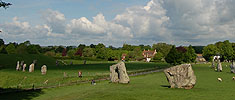
.jpg)
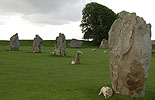


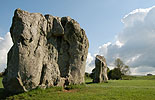

.jpg)
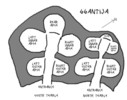
.jpg)
%20exterior%20wall.jpg)
%20front%20with%20scaffold.jpg)
%20entrance.jpg)
%20entrance%20and%20door.jpg)
%20doorway%20perforations.jpg)
%20left%20outer%20apse.jpg)
%20right%20outer%20apse.jpg)
%20libation%20hole.jpg)
%20left%20inner%20apse%20-%20altar.jpg)
%20right%20inner%20apse.jpg)
%20rear%20apse.jpg)
%20entrance%202.jpg)
%20entrance%203.jpg)
%20left%20outer%20apse.jpg)
%20right%20outer%20apse.jpg)
%20door%20to%20inner%20apses%202.jpg)
%20door%20to%20inner%20apses%201.jpg)
%20left%20inner%20apse.jpg)
%20rear%20apse%20-%20altar%201.jpg)
%20rear%20apse%20-%20altar%202.jpg)
%20rear%20apse%20-%20altar%20collage.jpg)
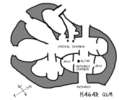

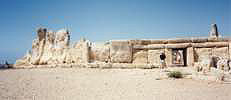





.jpg)


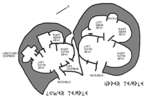
%20-%20door%20to%20inner%20apses.jpg)
%20-%20entrance.jpg)
%20-%20left%20outer%20apse.jpg)
%20-%20passageway%20inscription.jpg)
%20-%20recess%20at%20rear.jpg)
.jpg)
%20-%20entrance.jpg)
%20-%20right%20outer%20apse%20-%20window.jpg)
%20-%20right%20outer%20apse%20-%20steps.jpg)
%20-%20left%20outer%20apse%20-%20door%20to%20rear.jpg)
%20-%20left%20outer%20apse%20-%20door.jpg)
%20-%20left%20inner%20apse%20-%20looking%20right.jpg)
%20-%20right%20inner%20apse%20(with%20iain).jpg)























